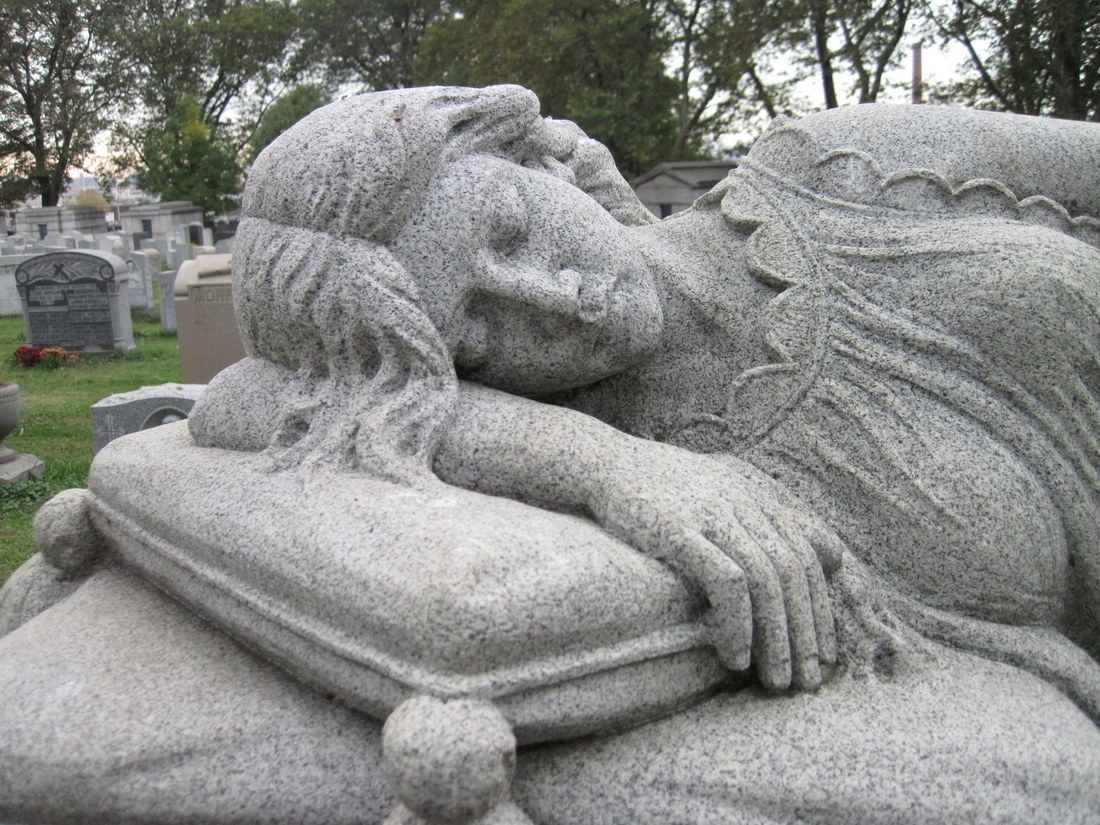
Bratislav Stojanovic wakes up every morning in a tomb. For 15 years the Serbian man has been sleeping in a cemetery in the city of Nis.
“He initially slept out in the open in the graveyard,” reported Reuters, “but decided to move into an empty tomb, just 3 feet by 3 feet, when the weather turned cold.”
Some twenty years ago a fire destroyed Stojanovic’s home, killing his father and making him homeless. In the intervening decades his country has been through some tough times, economically and politically. First he camped in abandoned homes but other homeless attacked him. The cemetery served as a safe-haven.
Stojanovic scavenges meals from dumpsters, bathes in a public bath house and basically, keeps to himself. “I got used to it,” he said. “Now I am more afraid of the living than of the dead.”
In Manila, capital of the Philippines and that country’s most populous city, with more than 10 million people, a much more lively community of cemetery dwellers has developed. An estimated 10,000 people live in North Cemetery, which is officially the country’s oldest cemetery, dating back to the 19th century, and includes the tombs of artists, writers, war heroes and even past presidents.
Also amidst the tombs are restaurants and stores.
“Mausoleums have been converted into shops, selling candies, canned sardines, noodle packs, candles and even prepaid cards for mobile phones,” reads a CNN article about the cemetery. “Elsewhere a small informal restaurant sells meals and drinks.”
Crafty residents take water from hydrants and meander the cemetery with pushcarts, selling it back to residents. Others have paid bribes to take electricity from nearby municipal power lines. Mausoleums offer protection against wind and rain, and the stone crypts are typically more sturdy than the low-cost housing units government authorities have tried to get cemetery inhabitants to move into.
For many people in this sprawling traffic-clogged city, the cemetery simply offers a much shorter commute. For few is this more evident than 52-year-old Mario Pormales, who is a gravestone mason and the cemeteries’ caretaker.
For others, reasons to live in the cemetery are more sentimental. “One elderly resident lost her husband years ago,” reported CNN. “With no children and no relatives to speak of, the lady finds her peace living out her days beside her husband’s grave.”
In England the news is a bit more sinister. In Stoke Newington, in north London, local residents have been complaining that an organized band of homeless people have been using the cemetery of the Mortuary Cchapel church, which is apparently the oldest non-denominational chapel in Europe, for drug-fueled sex orgies.
“People are having parties and copulating on the gravestones,” one local resident explained to the International Business Times. “Occasionally, the vagrants, druggies and thieves need to relieve themselves nearby, and Foxtons’ back wall is convenient.”—Foxtons is a local real estate office.
“Some of these people are there every day of the week,” reported the owner of a nearby Thai restaurant. “I think we are going back to Dickensian times.”
In New York City I used to live next to a cemetery and it was wonderful. There were no vagrants or drug-fueled sex orgies or people camped out in the tombs, but I would often take walks there, to exercise my legs and jog my mind. The architecture was pleasing, the trees were grand and filled with birds, and being located in an industrial nub in the far out New York City borough of Queens, there was hardly ever anyone there.
One summer afternoon skies darkened and fat rain drops began to pelt down. I sought shelter beneath the great branches of beech trees but soon noticed a more thorough refuge, the stoop of a mausoleum. Strangely, the name on the facade read:
NOBLE
Somehow, I was meant to find this spot. And as the drops steadied, I lay down on the marble and using a book as a pillow, fell asleep.
I have searched for historical precedents of people sleeping in cemeteries, and not come up with much. I do know of one spectacular example, the eminent American conservationist and nature writer, John Muir.
In 1867, just two years after the close of the Civil War, John Muir began an epic journey on foot, walking from the northern tip of Kentucky to the Gulf of Mexico. He rambled through the wild Appalachian mountain country, with not much more than the clothes on his back and a plant press, ecstatic at the novel and unfamiliar plant life that greeted him with every new mile gained.
In Savannah, Georgia Muir ran out of money, and while waiting for a post from his brother that contained funds which would allow him to continue his travels, he holed up in the city’s now famous Bonaventure Cemetery. Amongst the swooping live oaks and Spanish moss, Muir made a home, with “a little mound…for a pillow,” his plant press beside him. The awesomeness of this corpse-inhabited natural space was overwhelming for the young forest prophet.
“I gazed awe-stricken as one new-arrived from another world,” wrote Muir, in his book about the experience, A Thousand-Mile Walk to the Gulf. “Bonaventure is called a graveyard, a town of the dead, but the few graves are powerless in such a depth of life. The rippling of living waters, the songs of birds, the joyous confidence of flowers, the calm, undisturbable grandeur of the oaks, mark this place of graves as one of the Lord’s most favored abodes of life and light.”
Amidst the whir and grime of our modern world, sleeping in cemeteries still has benefits; solitude, and a space conducive for thought and reflection.
This is something Serbian cemetery-sleeper Bratislav Stojanovic seems to have picked up on.









